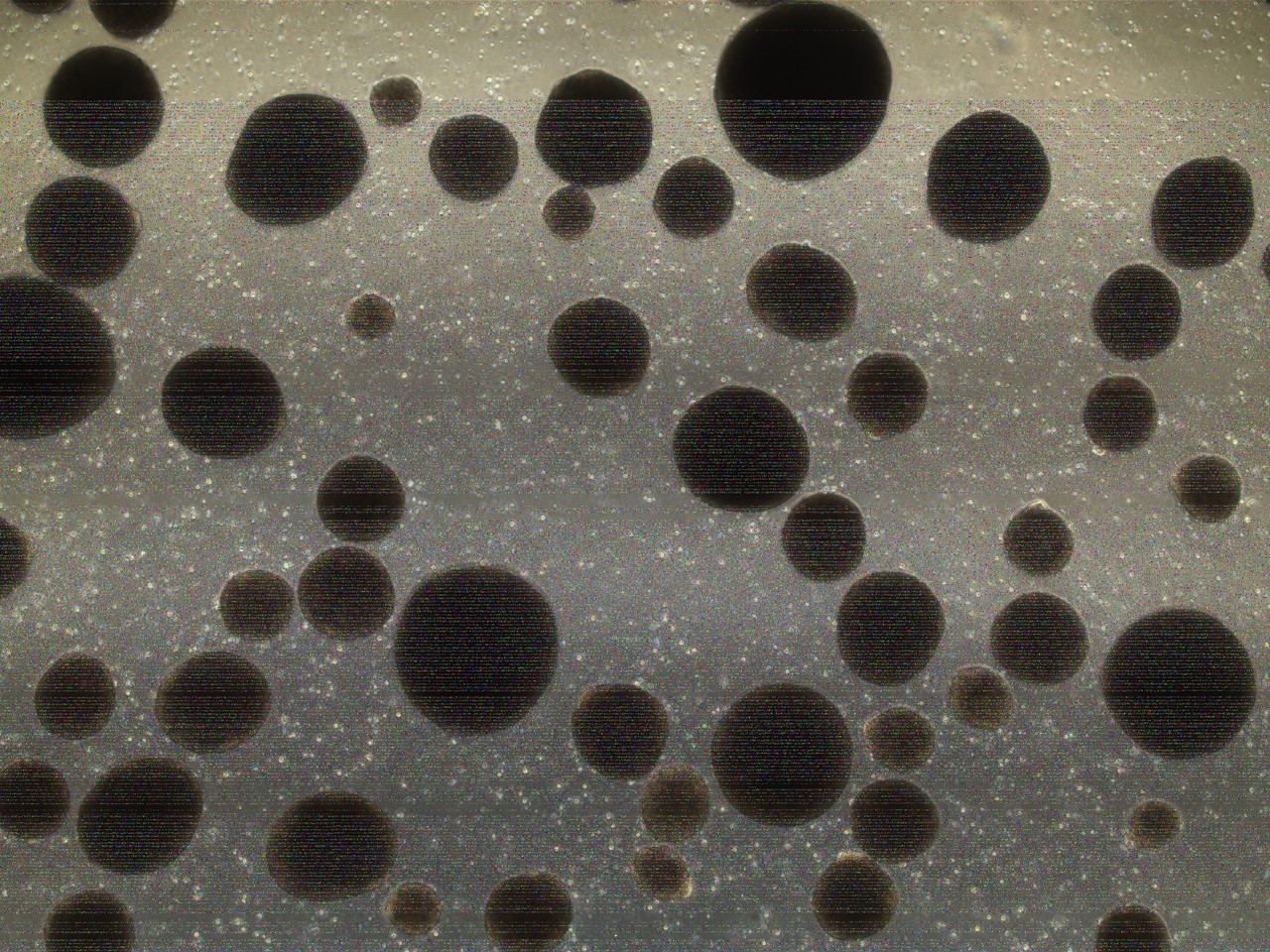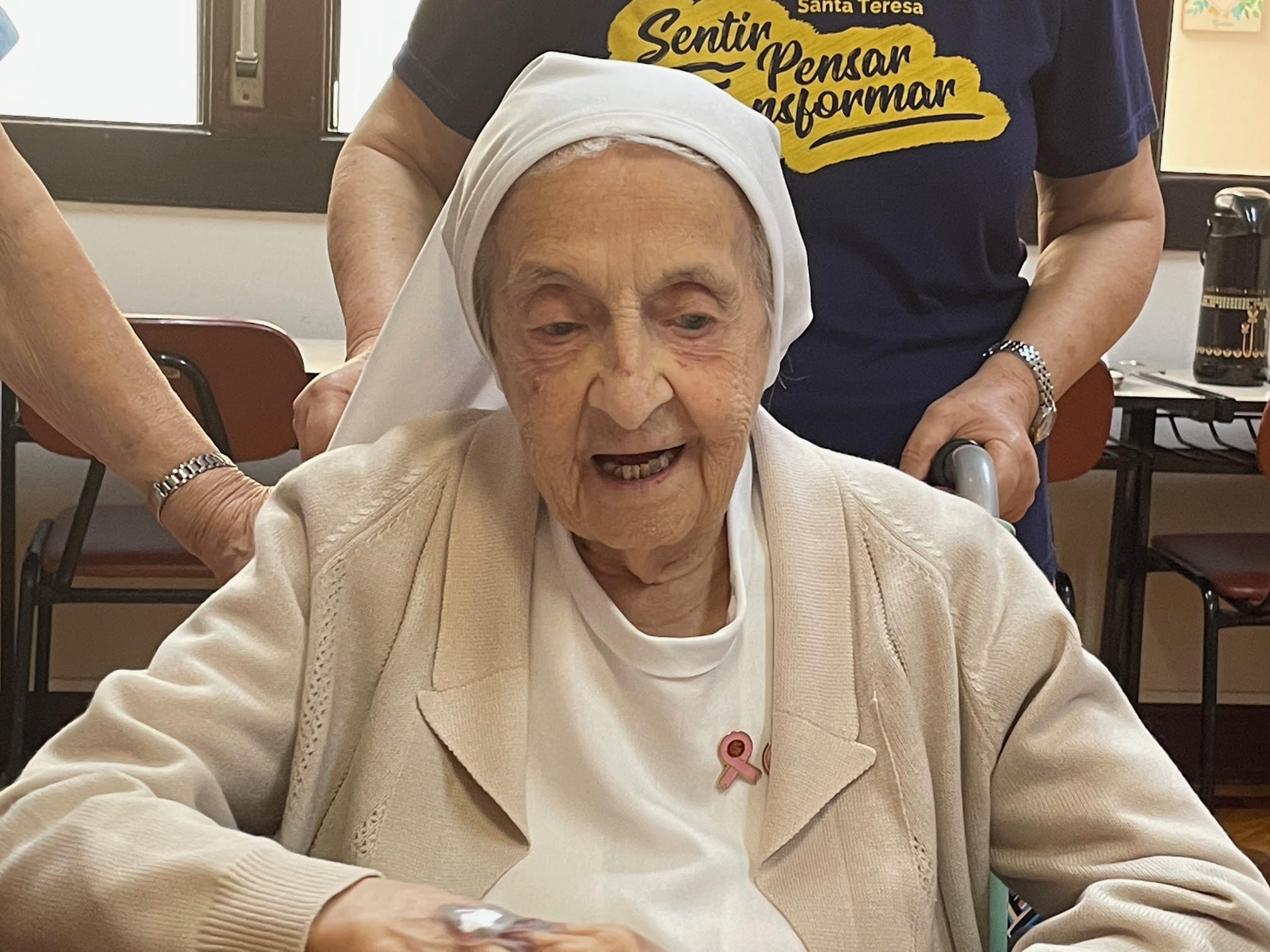


Organoids developed by the HUG-CELL team (credit: Monize Silva)
Published on 07/10/2025
By Maria Fernanda Ziegler | Agência FAPESP – Until her passing last April at the age of 116, nun Inah Canabarro Lucas was, by the account of the Gerontology Research Group, the oldest woman in the world. The Brazilian nun, who was living in Porto Alegre, in the state of Rio Grande do Sul, loved chocolate, hated bananas, had led a music band and traveled to every country in Latin America. In 2022, she contracted COVID-19 and, surprisingly, recovered without major complications.
Laura, 105, started swimming when she was 70. Today, she displays the agility of a young woman and excellent cognitive abilities. Instead of losing muscle strength over time, as expected, the swimmer from Minas Gerais state has preserved her muscles and started winning medals at the age of 100.
Milton, from Brasilia, a veterinarian who, at 108, followed and commented on all the scientific advances in the news, was able to name and remember the importance of everyone present at his 107th birthday party – something not so trivial even for someone celebrating only a few decades.
They all contributed to a project carried out at the Human Genome and Stem Cell Research Center (HUG-CELL) – a FAPESP Research, Innovation and Dissemination Center (RIDC) based at the University of São Paulo (USP). The study is mapping the genetic code of healthy centenarians in search of genes that determine their exceptional longevity. To date, samples have been collected from 75 centenarians and the search for new volunteers continues.
“We want to identify genes that protect against diseases common to aging, such as dementia and those related to muscle loss. We know that maintaining a healthy lifestyle is very important for achieving quality of life in old age. But we also know that after the age of 90, genetics is much more decisive than the environment,” says Mayana Zatz, coordinator of the HUG-CELL.
In addition to collecting blood from centenarians and sequencing their genomes, the researchers are reprogramming the blood cells (erythroblasts) collected and transforming them into induced pluripotent stem cells (iPS), a process that allows them to differentiate into any other cell type, such as muscle, bone or nerve cells. This also makes it possible to create organoids – mini-organs developed in the laboratory that can be used to study the functioning of body systems.
Using the mini-brains made from cells donated by Brazilian centenarians, the researchers plan to study genes related to protecting against neurodegenerative processes associated with senile dementia, Alzheimer’s, Parkinson’s and other common diseases of aging. But to do this, they are also investing in the development of more complex mini-brains, as well as advancing in the monitoring and active search for healthy centenarians. The protocols developed so far have been described in one of the chapters of the book series Methods in Molecular Biology, published by Springer.
“We’re working on two fronts. First, we have the cohort [group of study volunteers] of Brazilian centenarians. This is something that doesn’t exist in the world, since they have a very large genetic variability as a result of our miscegenation. This may allow us to identify a greater number of protective genes. At the same time, we’re developing more complex organoids that can more fully mimic what happens in the brains of centenarians,” says Zatz.
This means developing organoids that contain not only neurons but also other types of central nervous system cells, such as microglia, which detect and signal the presence of pathogens and play an important role in brain development.
“With this complex and more sophisticated experimental model, it’s possible to replicate various aspects of the brain’s functions, interactions and organization. It’s an ideal model for studying both issues related to brain development and neurological anomalies and disorders, since it mimics the cellular architecture and physiological processes of the human brain,” explains Raiane Ferreira, researcher at the HUG-CELL and a FAPESP doctoral fellow.
“We’re not developing anything new, we’re just advancing in the technique to create more complex mini-brains that allow us, for example, to include microglia,” says Ferreira.

Inah Canabarro Lucas was the oldest woman in the world until her death last April at 116 (photo: CEGH-CEL)
From start to finish
According to the researcher, there is a complicating factor in this process: iPS cells – the basis for making organoids in the lab – have more embryonic characteristics, and mini-brains are commonly used to study neurodevelopment.
“Our challenge is to adapt the model so that it expresses stress factors present in aging. That way, we can investigate how neuroaging occurs,” she says.
“The participants in the project are all very lucid. We know that microglia play a very important role in Alzheimer’s and other dementias because of their role in the homeostasis [balance] of the brain in aging. So at this stage of the research, we’re trying to understand whether the microglia in these older people would also be different, suffering less from the effects of aging. This will only be possible to find out from the organoids we’re developing,” says Ferreira.
The article “Immunocompetent Brain Organoids with Microglia Allow Advanced Aging Research” can be read at: link.springer.com/protocol/10.1007/7651_2024_565.
Source: https://agencia.fapesp.br/55299